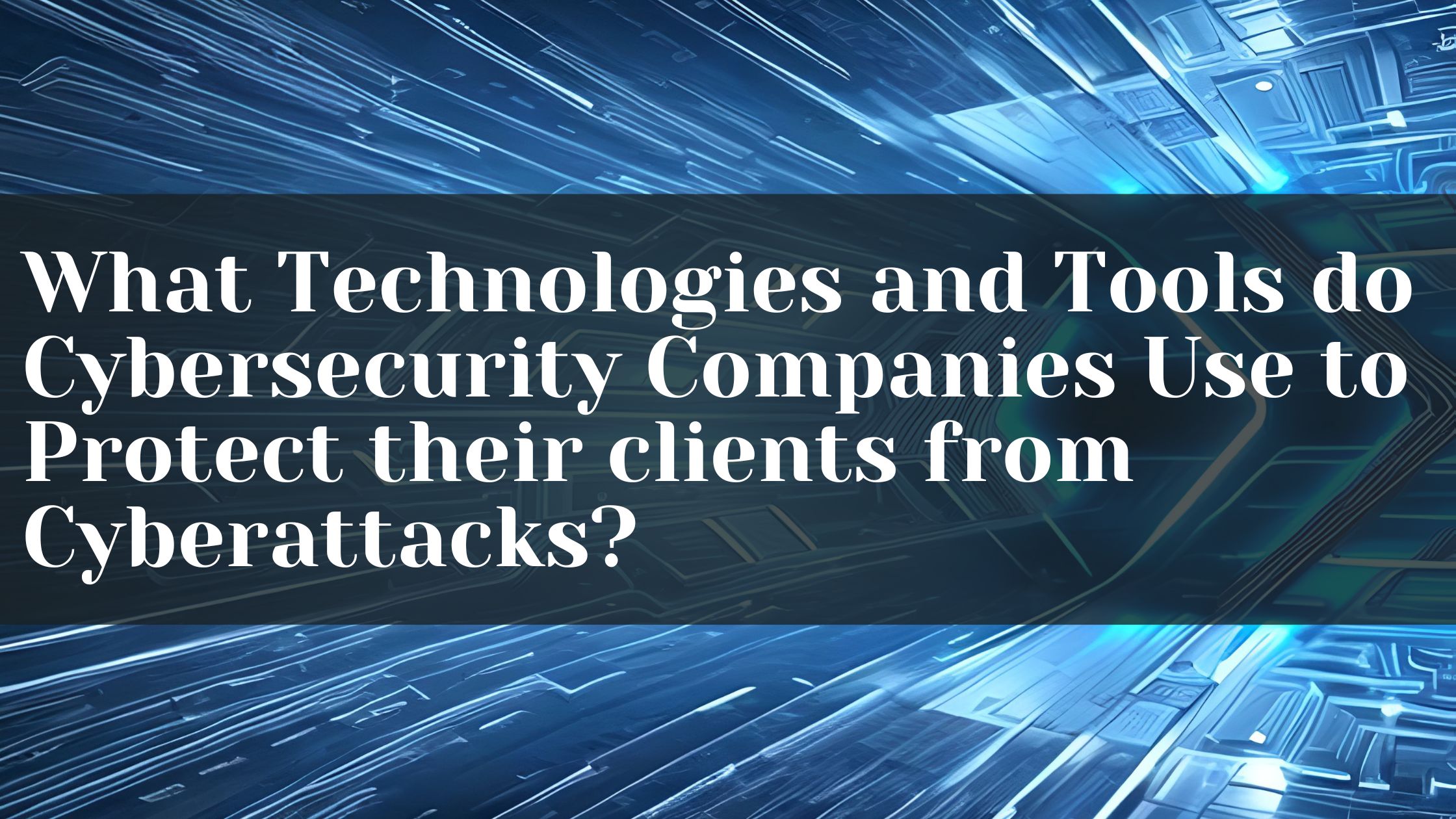In a world where our lives are increasingly interconnected through technology, cybersecurity has never been more critical. The landscape of cyber threats is in a perpetual state of evolution, with hackers continuously enhancing their sophistication. To counter these threats, cybersecurity companies employ technologies and tools to protect their clients from cyberattacks. In this blog, we will explore the cutting-edge technologies and tools employed to fortify digital defenses.
Explore- Cyber Security Company Implent Technologies and Tools to Protect from Cyberattacks
1. Firewalls: The First Line of Defense
Firewalls are like the sentinels guarding the entrance to a castle. They act as a barrier between a trusted internal network and an untrusted external network, filtering incoming and outgoing traffic. Next-generation firewalls use advanced techniques to provide comprehensive protection. Cybersecurity companies implement firewalls to identify and block malicious traffic, ensuring that only legitimate data enters and exits a network.
2. Antivirus and Anti-Malware Software
Antivirus and anti-malware software are essential for detecting and removing malicious software from computers and networks. These programs continuously scan files and web traffic, looking for known malware signatures and suspicious behaviors. Machine learning and heuristics have made modern antivirus software more effective at identifying new and evolving threats.
3. IDS & IPS
IDS and IPS are technologies that monitor network traffic for signs of malicious activity or policy violations. While IDS detect and alert administrators to potential threats, IPS can automatically respond to stop these threats in real time. They examine network packets, seek attack indicators, and promptly block harmful traffic.
4. Security Information and Event Management (SIEM) Systems
SIEM systems are critical for real-time monitoring and analysis of security events in an organization. They collect & correlate data from various sources, such as logs, network traffic, and system activity, to identify unusual patterns. It helps detect early threats and provides a holistic view of an organization’s security posture.
5. Endpoint Security Solutions
Endpoints, such as laptops, desktops, and mobile devices, are often the target of cyberattacks. Endpoint security solutions, which include antivirus, anti-malware, and application control, protect these devices from threats. They can also manage device access and enforce security policies. Cybersecurity companies use this to ensure all endpoints adhere to the organization’s security standards.
6. Data Encryption
Encryption is a fundamental technology for protecting data in transit and at rest. By converting data into a code that is unreadable without the decryption key, encryption safeguards sensitive information from unauthorized access. Transport Layer Security (TLS) and FileVault are commonly used for encrypting data during transmission and on storage devices, respectively.
7. Multi-Factor Authentication (MFA)
MFA is a powerful tool for preventing unauthorized access to systems and accounts. It requires users to provide two or more pieces of evidence (e.g., a password and a fingerprint) to prove their identity. MFA adds a layer of security and makes it much harder for hackers to gain access. Cybersecurity companies use MFA because they can’t provide access if one has stolen login credentials.
8. Security Patch Management
Regularly updating software and operating systems is crucial for closing security vulnerabilities. A cyber security company utilize automated patch management tools to ensure all systems are up-to-date and protected from known exploits.
9. Vulnerability Scanners
Vulnerability scanners are used to identify weaknesses in an organization’s IT infrastructure. They simulate attacks and check for known vulnerabilities in software and configurations. Once vulnerabilities are detected, organizations can take action to remediate them before attackers exploit them.
10. Threat Intelligence Feeds
Cybersecurity companies leverage threat intelligence feeds to stay informed about the latest threats and attack techniques. These feeds provide real-time information on emerging threats, enabling organizations to adjust their security strategies proactively.
11. Machine Learning and Artificial Intelligence
Machine learning and artificial intelligence play an increasingly vital role in cybersecurity. These technologies enable systems to analyze vast amounts of data and recognize patterns humans might miss. They are used for anomaly detection, behavior analysis, and predictive threat modelling.
12. Security Orchestration, Automation, and Response (SOAR)
SOAR platforms allow organizations to automate and orchestrate their incident response processes. By integrating various security tools and technologies, SOAR can streamline threat detection, investigation, and remediation.
13. Blockchain Technology
Blockchain is not just for cryptocurrencies; it has applications in cybersecurity as well. It can secure data integrity, create tamper-evident logs, and authenticate users in a decentralized and highly secure manner.
14. Biometric Authentication
Biometric authentication, such as fingerprint recognition and facial recognition, is increasingly used to enhance security. These methods are difficult to replicate and provide a high level of identity verification.
15. Virtual Private Networks (VPNs)
VPNs are crucial for securing communication between remote users and the corporate network. They encrypt traffic and mask IP addresses, ensuring that data remains confidential and secure in transit.
Conclusion
The ever-evolving landscape of cybersecurity demands a multifaceted approach to protect from cyber threats. The above-mentioned technologies are just a glimpse of what cybersecurity companies use to build robust defenses against cyberattacks. As cyber threats grow in complexity and frequency, organizations must stay updated with the latest advancements in cybersecurity technology. Besides, adopting a comprehensive cybersecurity strategy is crucial to safeguard digital assets.
